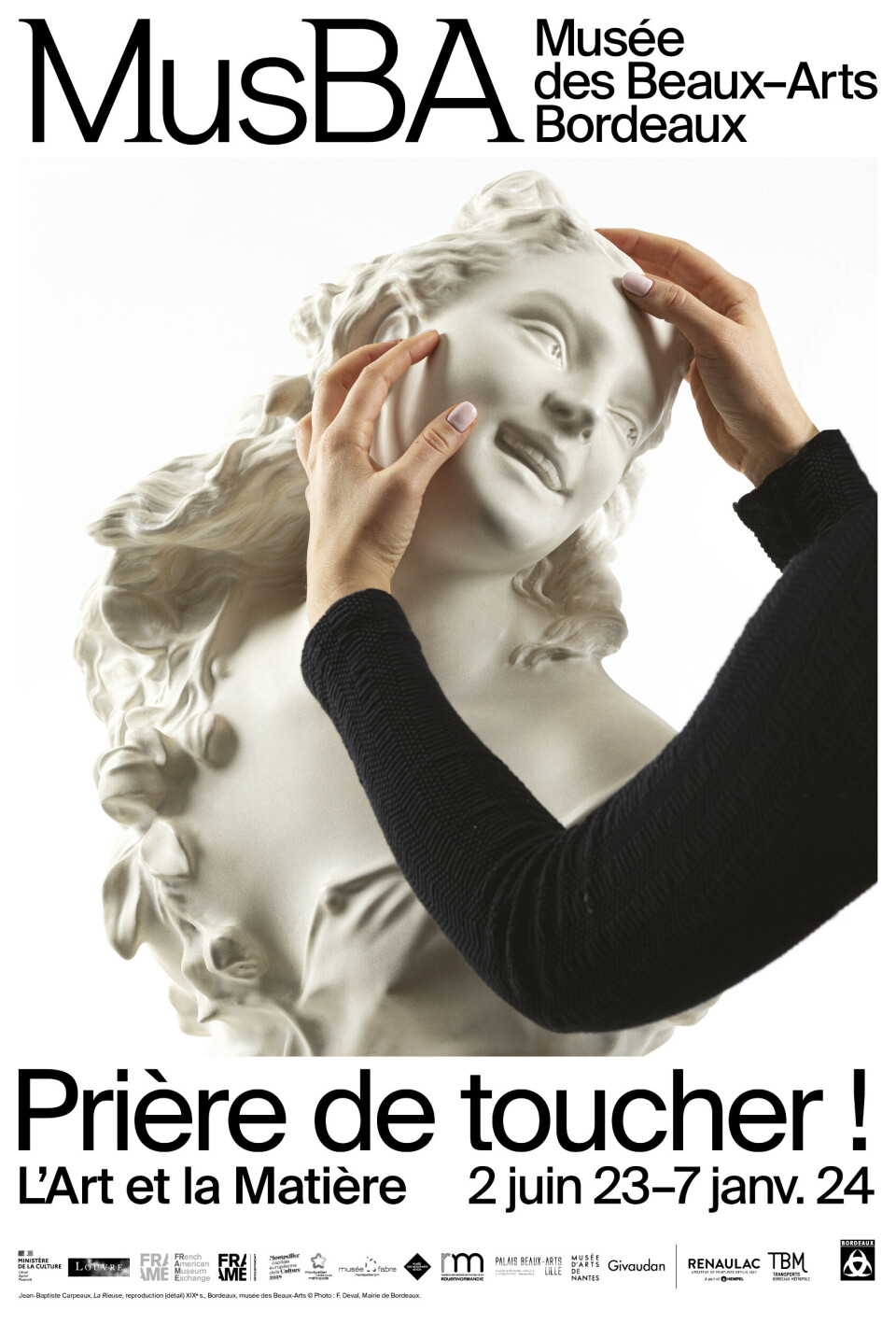-
Duck Cold! Four French phrases to use when it is freezing outside
We remind you of French expressions to use to describe the drop in temperature
-
When and why do we say le moral dans les chaussettes?
We explore this useful expression that describes low spirits
-
David Hockney among France’s New Year honours list
Former Normandy resident awarded second grade of honour
Sensory sculpture: get in touch with art in Bordeaux
Samantha David reports on an innovative touring exhibition, running in Bordeaux until January 2024, which allows visitors to get touchy-feely with works of art

If you have ever wanted to stroke a statue, the Musée des Beaux-Arts de Bordeaux (MusBA) is offering exactly that opportunity with their new exhibition, ‘Prière de Toucher! L’Art et la Matière’ (Please touch! Art and the Material).
Some of the artworks are reproductions, and others are originals, but all of them can be caressed, stroked, and touched.
Read more: From Renaissance to Hockney - 12 Spring exhibitions to see in France
Where the idea came from
The idea springs from an interchange in a letter written by Diderot in 1749: “One person advised us to ask our group’s blind person if they would be happy to have eyes. “If curiosity didn’t dominate me,” he replied, “I would like just as much to have long arms: I think my hands would tell me much better what was happening on the moon than your eyes or telescopes.”
So unlike almost every other exhibition which is sternly marked ‘Do Not Touch!’, this one is designed to be tactile. Although the reproductions are mainly constructed of resin, surfaces include stone, iron, and wet earth.
Originally conceived by the Musée Fabre in Montpellier, this travelling exhibition includes reproductions of works belonging to the Beaux-Arts museums in Montpellier, Lyon, Nantes, Lille, Rouen, and Bordeaux plus members of FRAME which is a French-North American museum exchange network. The form of the human body is explored – and explorable – as well as techniques and materials dating from antiquity to the 20th century. The guided visits aim to show visitors how to approach artworks from the point of view of a curator as well as an artist. It is designed to be especially rewarding to sight-impaired people, the aim being to make art and culture truly accessible to everyone.
Running in parallel is the ‘Resculpter les énergies’ project in partnership with fusion Jeunesse. This is designed to give children a basic understanding of how exhibitions are conceived and mounted.
The result is a fun exhibition curated by 58 schoolchildren (from primaire, collège, and lycée) in Gironde and Lot-et-Garonne. The lycée pupils are acting as guides and curators for the exhibition.
Read more: 100 French heritages sites to receive funding through lottery funds
Full programme of events
In line with museums generally, the Beaux-Arts in Bordeaux has a full programme of events, including workshops for adults where anyone can go and learn how to draw and sculpt. Tickets have to be reserved in advance and cost €10. (See the website for reductions).
There are also lots of workshops for children, starting from age three, and even a guided visit for babies ages 12-30 months (with their parents, of course).
Compared to some Beaux-Arts museums, Bordeaux is small, and the permanent exhibitions are easily explorable in an hour.
Some of the most popular exhibits are the works by Rosa Bonheur, 1822-1899, a 19th-century painter born in Bordeaux who became famous for her incredibly lifelike renditions of animals and counted Queen Victoria amongst her admirers. As well as a selection of her works, there is a portrait of her in her studio.
The museum also has the largest collection of British paintings in France outside the Louvre. The catalogue ‘Is it British?’ includes John Martin’s painting, ‘Macbeth and the Three Witches’.
Amongst the works by Rubens, Titian, Brueghel, and Picasso, a personal favourite is Rolla by Henri Gervex (1852-1878), which is a depiction of perfect serenity – at least concerning the woman. Her lover is contemplating suicide.
‘Prière de Toucher! L’Art et la Matière’ runs until January 7, 2024, in the Gallery at the Beaux Arts Museum in Bordeaux.
Related links
‘Paris proves people will happily pay for great art’
France’s stunning national library is a reader's paradise open to all
Plain sailing? Not for the Paris art museum inspired by a ship
























